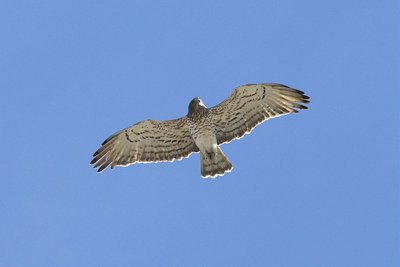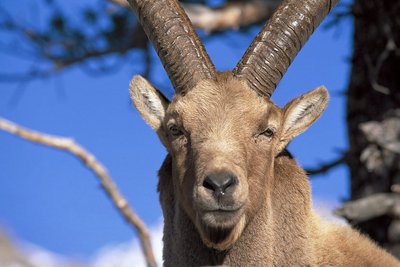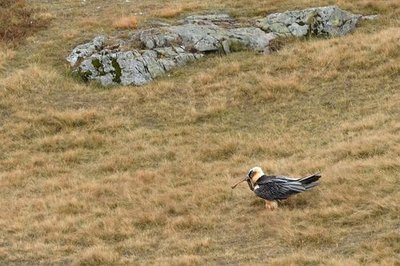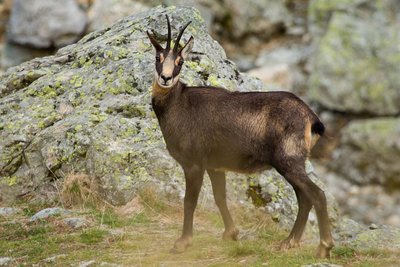Col du Cheval de Bois
”Col du Cheval de Bois is the meeting point of some major geological phenomena in the history of the Alps. I feel moved when I walk across what is actually the result of volcanic eruptions. Then, a little plant catches my attention, a plant that can only be found here at the summit of Mont Viso! What has happened? Nature is really very mysterious... "
Rodolphe Papet, Champsaur park keeper and guide
Description
From the Auberts car park, walk up 200 m to the crossroads. Turn right to cross the Drac Blanc and go over to the left bank. The Pré de la Chaumette trail is signposted with arrows. On the path above the Prelles waterfall, three information panels mark the entrance of the protected centre of the National Park. Cross the footbridge over the Prelles torrent and continue on to the Pré de la Chaumette refuge. After crossing the Rougnoux torrent, make for Pas de la Cavale. Once you have crossed the footbridge, you arrive at a small plateau. At the fork, turn right and again cross the Rougnoux (this time across a ford). You then continue the path up to the col, where a wooden horse awaits you. For the return, follow the same route as far as the Pré de la Chaumette refuge, then take the path along the right bank of the torrent, around the south-facing slope and then follow the route you took on the way out all the way to the car park.
- Departure : Les Auberts, Champoléon
- Arrival : Les Auberts
- Towns crossed : Champoléon
16 points of interest
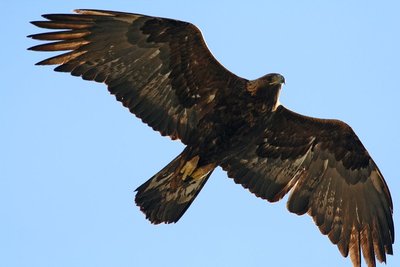
Aigle royal en vol - PNE - Couloumy Christian  Fauna
FaunaRoyal Eagle
The Royal Eagle is one of the most rare and protected species in Europe. Its large size, its dark colouring, its rectangular wings and its frequent movements in the open air enable it to be easily recognized. In the hottest hours of the day, it turns about regularly benefiting from the rising wind in order to gain altitude. Thanks to its excellent sight the Royal Eagle scans its surroundings in search of an imprudent marmot or a young chamois. In winter it regularly feeds off the cadavers of animals...
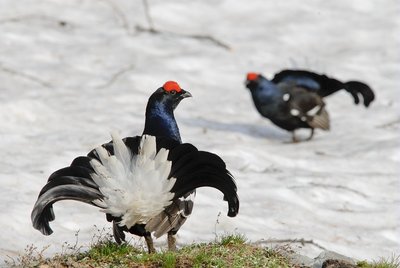
Tétras-lyre mâle en parade - PNE - Papet Rodolphe  Fauna
FaunaBlack Grouse
To observe Black Grouse in summer, you must get up early. In France, Black Grouse or the ‘Heather Cock’ is only found in the Alps. In Spring, the male with black feathers, a lyre shaped tail and white feathers under its tail puts on a display to impress the hens. In winter, it spends most of its time taking refuge in igloos dug in to the snow to protect itself from the cold. This is a time when it is particularly sensitive because it cannot compensate for the energy that it uses when it leaves its igloo too hastily disturbed by off-piste skier or a hiker with snowshoes.
 Fauna
FaunaShort-toed Snake Eagle
Spring has only just returned when you can hear cries as loud as the church bells. You have to lift your head up to admire two large birds flying together, alternating aerobatics and hovering in the sky like two silver coloured kites playing with the wind.. Their light stocky silhouette and their darker head enable you to identify the Short-toed Snake Eagle. It mainly feeds on reptiles (lizards and snakes) which it captures by the head, which it can then regurgitate in order to feed its young.
 Fauna
FaunaAlpine Ibex
The Alpine Ibex, also known as the « rock goat », is solid and covered with a coat that is chocolate coloured or beige depending on the season and its sex... Males and females both have ringed horns which grow throughout their life. The Alpine Ibex lives in groups, males on one side, etagnes (females) and the young on the other. In the winter, the females mix with the males during the mating period and give birth at the beginning of Summer. In order to observe it, look over on to the facing slope, the Alpine Ibex is sometimes visible in Spring.

Cascade de Prelles - PNE  Water
WaterPrelles Waterfall
The waterfall feeds in to the Drac blanc. The minor bed of the torrent is very large giving an idea of its violence and its capacity to wash away stone boulders.
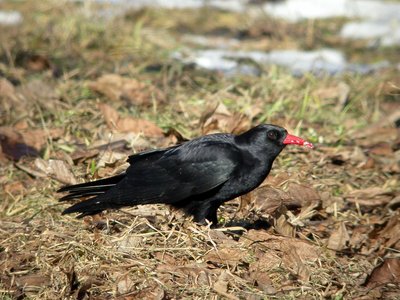
Crave à bec rouge - PNE - Combrisson Damien  Fauna
FaunaRed Billed Chough
The Red Billed Chough is a surprizing bird in many ways. It lives near to the cliffs and plays in the clouds, breaking the silence with its brief, strident and almost metallic cry. Alerted by the echo coming from the mountain wall, its companions reply to it. Its confident gait with a rhythmic step, the Red Billed Chough strides meticulously across the prairie in little groups to find small worm and crickets in the pasture... Except for occasional seasonal escapes linked to the availability of food, the Chough is sedentary.
 Fauna
FaunaBearded vulture
During a worldwide count organised in October each year, an observation post is set up in Le Pré de la Chaumette. The bearded vulture has already been spotted, but alas not each time! Falsely accused of carrying off lambs and children, this large bird with a wingspan of 2.80 m has been persecuted by man. Shooting, capture, poison, together with the scarcity of its food sources led to the bird’s extinction in the Alps in 1930. A European programme to reintroduce it was launched in 1986. Since then, the bearded vulture has been regaining ground.
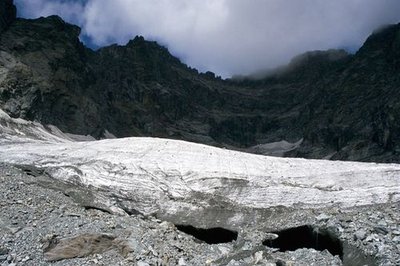
Le glacier de la Veyrardonne, au pied du Sirac, face sud, Champoléon - Marc Corail - PNE  Glacier
GlacierVeyrardonne and La Pierre glaciers
From the small plateau, the Veyrardonne and La Pierre glaciers can be seen. As reserves of snow, névé and ice, bolstered in winter primarily by precipitations of snow and diminished in summer by melting, glaciers are highly sensitive natural indicators of climate change.
 Fauna
FaunaRock ptarmigan
Sometimes seen at the foot of the slope of the Crête du Martinet, here in the mountains the rock ptarmigan finds the conditions essential to its survival. Capable of withstanding extreme environments, this hardy bird is covered in plumage which is inflated with air and this insulates it in very cold temperatures. Its legs, which are feathered right down to the tips of its toes, act as snowshoes in powdery snow, leaving tracks rather like those of the hare. This is where its Latin name comes from, lagopus meaning « hare's foot ».

 Flora
FloraOreochloa seslerioides
A protected species (red list of vascular plants in Metropolitan France), the Oreochloa seslerioides is regarded as native to the Le Viso massif (Queyras). La Rouite is home to the national park's only colony of this species which is threatened by global warming, due to its high-altitude growing area.
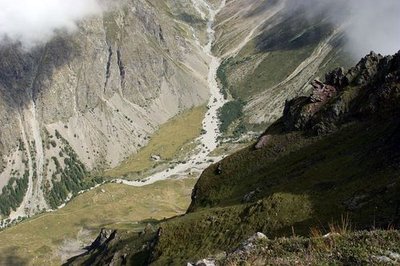
Le Pré de la Chaumette depuis la Rouite - Marc Corail - PNE  Geology and geography
Geology and geographyLa Rouite
A small mountain formed by a particular volcanic episode, La Rouite rises to 2,680 metres above sea level and offers a beautiful vantage point over the surrounding peaks and small valleys. The various geological movements have produced an abrupt western slope and a gentle and regularly inclined eastern slope. The ensemble stands out in the landscape, between the crystalline geology of the Le Sirac slope and the flysch deposits of the thrust sheet to the south. The clear outcrop conditions expose to view the ancient flow deposit formations in particular.
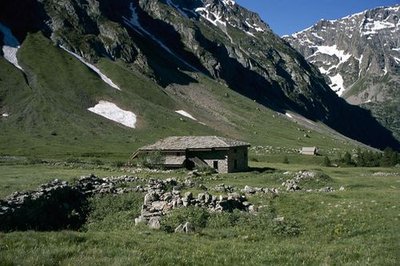
Le refuge du Pré de la Chaumette, Champoléon - Marc Corail - PNE  Pastoralism
PastoralismChaumette Meadow
The refuge is situated in a vast meadow formed by alpine grasslands that benefit from deep soil, on gentle slopes that are covered with snow on an average of eight months a year.
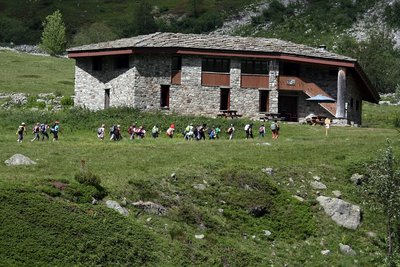
Le refuge du Pré de la Chaumette - Marc Corail - PNE  Hut
HutRefuge at Chaumette Meadow
The pastoral cabin at Champoléon was built by stockbreeders in 1921. It was in 1972 that the cabin was restored for the first time... Two years later, the French Alpine Club (CAF) took over its management in order to insure shelter for the increasing number of hikers of the GR54. Having become too cramped, the refuge was rebuilt in 1979 on the ruins of the hamlet and became the Chaumette Meadow. The decorative stones were cut on site at Champoléon. The imposing Lauzes stones used to cover the roof underline the effort made to integrate with the landscape. Today flocks of sheep are brought up to the mountains at the end of June and are visited once a week.
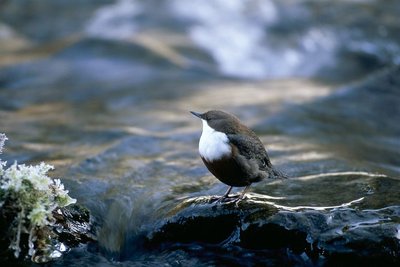
Cincle plongeur - Robert Chevalier - PNE  Fauna
FaunaWhite Throated Dipper
The White Throated Dipper is easy to observe as long as you are discreet. It lives beside mountain rivers and torrents. A little red and white bird with a short tail, it has a fine beak, and a white mark on the chin and the chest. . This astonishing sparrow has the particular skill of being able to walk on the bottom of the water against the current in search of food. It flattens itself down and clings on to the bottom with its claws, opens its eyes, which are protected from the flow by a fine membrane and spots: worms, larvae, little crustaceans and fish.
 Fauna
FaunaChamois
An emblematic animal in the Alps, the chamois or « rock goat » has short curled horns. Like the Ibex, it is easy to observe through binoculars. The goats and esterlons (young males aged one year) like to live in big herds ; in contrast, the billy goats stay quite isolated only rejoining the females during the mating season.. In the winter, the chamois need a lot of tranquility in order to conserve their reserve of fat which they need in order to survive...
 Fauna
FaunaEurasian Crag Martin
The Eurasian Crag Martin is dressed in beige tones. It is capable of real flying prowess, an indispensable quality for capturing the multitude of insects that it feeds on. In Spring, as soon as it has found a safe rocky ridge, the Eurasian Crag Martin tirelessly transports, mud and pieces of plants with its beak. With the help of this unique tool, it solidly fixes each element on to the rock thanks to a clever mixture of saliva and water.
Forecast
Altimetric profile
Sensitive areas
Golden eagle
- Impacted practices:
- Aerial, , Vertical
- Sensitivity periods:
- JanFebMarAprMayJunJulAug
- Contact:
- Parc National des Écrins
Julien Charron
julien.charron@ecrins-parcnational.fr
Golden eagle
- Impacted practices:
- Aerial, , Vertical
- Sensitivity periods:
- JanFebMarAprMayJunJulAug
- Contact:
- Parc National des Écrins
Julien Charron
julien.charron@ecrins-parcnational.fr
Recommandations
In bad weather, take the same route back to the Pré de la Chaumette refuge along the left bank.
 In mountain pastures, protection dogs are there to protect the herds from predators (wolves, etc.).
In mountain pastures, protection dogs are there to protect the herds from predators (wolves, etc.).
When I hike I adapt my behavior by going around the herd and pausing for the dog to identify me.
Find out more about the actions to adopt with the article "Protection dogs: a context and actions to adopt".
Tell us about your meeting by answering this survey.
Information desks
House of Champsaur
, 05260 Pont-du-Fossé
Information and documentation, temporary exhibitions. Sale of products and works of the Park. In the same space, home office Tourist High Champsaur. Free admission. All animations of the Park are free unless otherwise stated.
Transport
Coach stop: Les Auberts
Access and parking
On the N85, head for Pont de Fossé. After the village, continue on the D944, turn left onto the D944A, cross Les Borels/D472, Les Baumes and Les Clots before arriving at the Auberts car park.
Parking :
Source

Report a problem or an error
If you have found an error on this page or if you have noticed any problems during your hike, please report them to us here:


